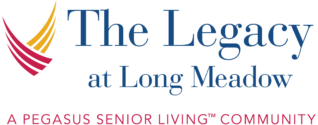Balance exercises may seem trivial, but they are critical in helping a senior prevent injury from trips and falls. Around 25% of American seniors fall at least once annually, resulting in around 3 million annual emergency visits from falls.
Many senior communities include helpful amenities like fitness rooms or exercise classes. This can make it much easier for a senior to reach the recommended weekly physical activity, including balance and muscle-building exercises. Additionally, an assisted living community will typically have appropriate workout equipment and activities to help ensure resident safety.
After a brief look at the importance of physical activity and the types a senior should be getting, we’ve included a few specific balance exercise ideas.
Importance of Physical Activity
When talking about physical activity for a senior, we’re not talking about an older adult running a marathon—although, if they are, we tip our hats to them!
Even light physical activity can provide benefits, such as maintaining a healthy weight, lowering the risk of heart disease, or reducing the chances of injury. And suppose light physical activity is all some seniors can manage due to health limitations. In that case, that’s still better than no activity.
Being a part of a community that offers group-based physical activities or classes can provide great social encouragement to stay active and build relationships with neighbors at the same time.
Types of Physical Activity a Senior Should Do
There isn’t a one-size-fits-all answer for how much physical activity a senior should get. Although, the CDC recommends a few targets to aim for on a weekly basis.
Physical Activity
Physical activity could include things like walking, running, gardening, or playing catch with a dog. According to the CDC, older adults should get between 75 to 150 minutes of activity weekly, depending on how strenuous the activity is.
For example, a senior who can run or hike would likely be fine with closer to 75 minutes. Whereas less strenuous activities would need more time to reach the same benefits.
Strength Building
In addition to physical activity, the CDC also recommends that seniors include muscle-strengthening exercises or activities at least 2 days per week. Strength-building exercises could include wall pushups, toe lifts, or using various ability-appropriate pieces of exercise equipment.
Balance Exercises
The CDC recommends that at least 3 days include balance-building exercises. By improving their balance, a senior can give themself a better chance at avoiding an injury, or worse, from slipping or falling.
Balance Exercises for Seniors
We know that balance exercises are important. But what exactly is a balance exercise, and which ones should a senior be doing? At its core, balance exercise or balance training is a form of muscle strengthening. The goal is to strengthen specific muscles that help keep you upright.
There isn’t a single “best” balance exercise, but let’s look at a few beneficial ones:

Yoga & Tai Chi
The nice thing about yoga and tai chi is that either can be modified to a senior’s abilities and fitness level. For example, chair yoga could be the answer for an older adult with limited mobility. In addition to strengthening muscles and improving balance, both of these martial arts may decrease your risk of heart disease and lower blood pressure.
Bodyweight & Equipment-Free Exercises
Most balance exercises don’t require fancy equipment. A couple of beneficial equipment-free balance exercises include rock the boat, tightrope walk, or the tree pose. Each of these exercises works different muscles and helps improve your balance in different ways.
Using Equipment & Aids
Balance exercises may not be high-impact or strenuous, but care must still be taken. Given the nature of the exercises, falls are possible. Suppose you’re worried about falls while exercising. In that case, you can perform many balance exercises while using a wall or chair for support.
In a community setting, a caregiver may be an option as a support during a balance exercise until you’re confident to do it alone.
Consult a Healthcare Provider
Consulting with a doctor or other healthcare provider becomes increasingly more important as you age. Health changes may affect your abilities, and there may be certain exercises that put you at particular risk that your doctor can review with you.
Finding a Community to Support Your Health
Community support is much more than a retirement home with the best view. It involves staff caring about each resident’s well-being and ensuring they’re doing everything possible to facilitate healthy aging.Considering retirement in Richmond? Give us a call at The Legacy at Long Meadow. Our helpful team is available to answer your questions and book you a community tour, so you can see the Legacy difference.
